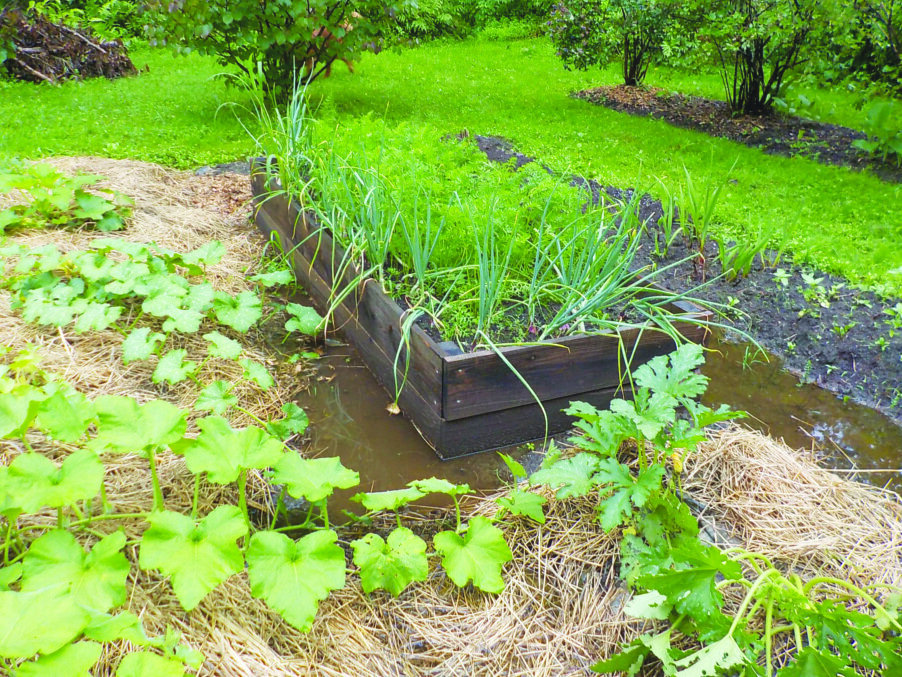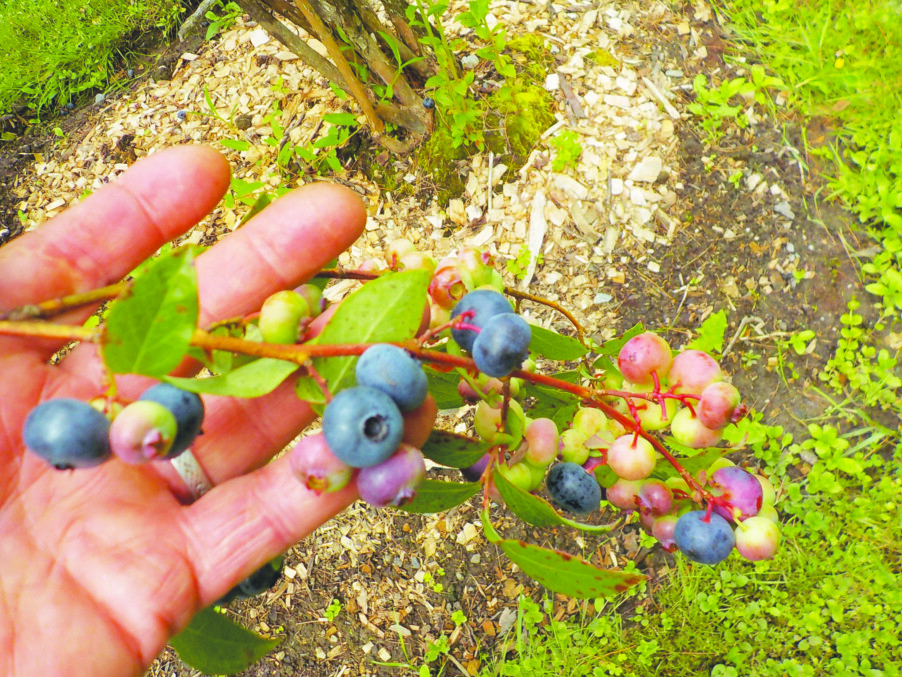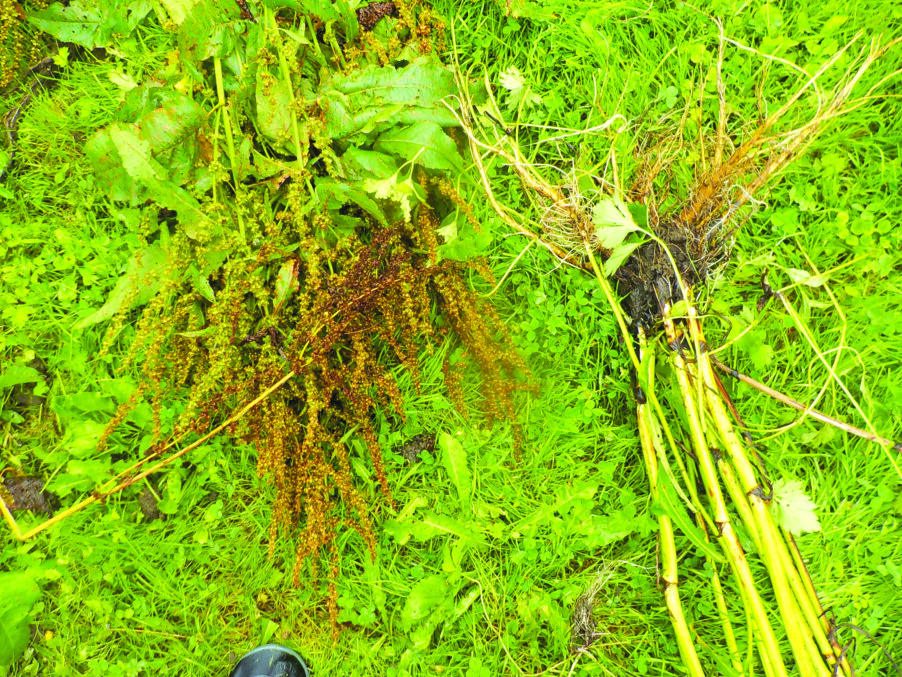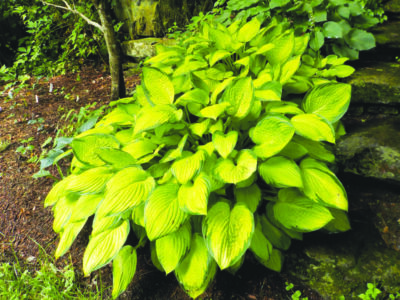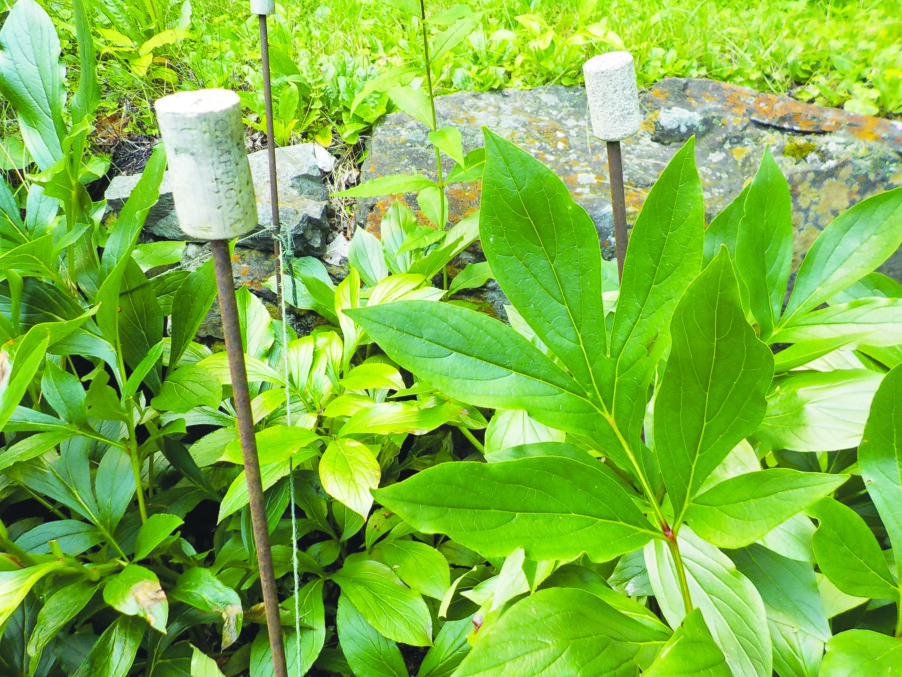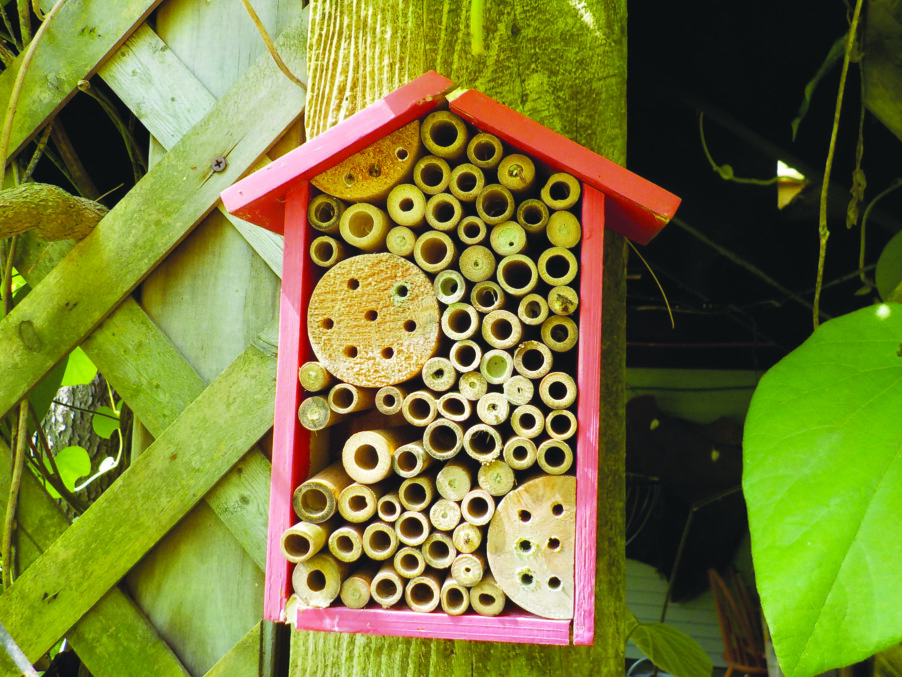Start with the garlic, have patience with potatoes
Those of us who grow vegetables are faced with many questions each year: Will there be a late frost that will harm our tomatoes and peppers if we plant them on Memorial Day weekend? Is it time to harvest garlic now, since they produced their scapes early this year? When should we harvest broccoli — now, with heads still fairly small, or wait till they get bigger? Will the sun finally prevail and give all our veggies a big boost after all this rain?
We have seen more rain than usual — much more. Even a quick shower results in standing water in the walkways between my mounded raised beds. But in addition to the excess water, plants aren’t getting their usual allotment of sunshine. They need sun — strong, bright sun — to grow and produce fruits and leaves. The lack of sunshine is what is causing smaller veggies, yellowed leaves and later ripening.
Is it time to harvest garlic yet? After the plants send up those curly stems we call “scapes,” it is generally fine to harvest garlic. Traditionally I pull mine in mid to late August. But it’s important to pull them at the right time, not sooner or later than needed.
Here’s what I do: I start by groping my garlic. I slip my hand into the soil and feel how big the bulbs are. I don’t pull them if they’re tiny. But to be on the safe side, I pull a few and look at the skin over the cloves. I want the skins to be strong and tight for good storage. If they are breaking down (due to all the rain), I pull my garlic. If not, I let them keep growing, but check them often.
What about potatoes? My advice is to wait. Yes, you will have some small potatoes as soon as they have blossomed. But I wait much longer than that to harvest mine, as I want big spuds. When leaves start to yellow and die back, then I dig them all. In the meantime, I slip my hand into the soil (without disturbing the plants) and grab a few “new” potatoes for a special treat.
Even though a healthy broccoli plant will produce more food from its side shoots than the main head, some of my plants are small and yellowed from lack of sun. I am pulling the feeble ones and planting a late crop of lettuce by seed in the space.
My Brussels sprouts plants are also much smaller than normal this year. Fortunately, they will continue to grow until the end of October or even later. If we get sunshine soon, they should recover. My normal advice is to cut the tops of the plants off on Labor Day weekend so that the plants don’t keep growing taller but instead send their energy into producing big “sprouts.” This year I’ll be lucky if they have stalks at all. So I will wait and see — and I accept that my harvest might be small or non-existent.
Carrots love the rain and are growing nicely. We thinned them in early July and are keeping them well-weeded. Still, little sunshine means they can’t bulk up as they would in a normal year.
Onions are ready to harvest when their tops flop over. Pull the onions, even if small, and allow them to dry for a week or so in a shady, breezy spot.
One bright spot in the garden this year is celery. I don’t usually grow it, as in the past mine has been tough to chew and a magnet for snails and slugs. This year I planted six plants, and although the stalks are not yet thick, the plants are big and so far have not seemed to attract pests. I ate a stalk, and it is tougher than store-bought. But tasty.
I usually grow celeriac instead of celery, and I did start some from seed indoors. Celeriac is also called celery root and has a big bulb that grows above the soil surface. It keeps in the refrigerator for up to six months, and when added in a soup or stew it has the same celery flavor. This year, with little sun? The bulbs are not showing yet.
All this rain inspired me to grow watercress! I got seeds, and the packet says plant in wet soil, preferably in a shady area. I have that. I only did that recently, but the plants have sprouted and seem happy.
The Cornish Fair is always on the third weekend of August and has competitions for everything: who can throw an ax most accurately, who can produce the best strawberry jam — and much more. For me it is a time to compete in the vegetable and flower categories in the gym of the school. Tomatoes generally are ripe by then, but this year — who knows?
Even though I have been picking off the many yellowed leaves on my tomato plants, they are still far behind their usual selves. Do pick off the yellow leaves — they will only spread fungal disease. But only do so when the leaves are dry — if they ever are!
I heard that a study at Harvard found that people who eat a cup of ice cream every day live longer than those that do not. I couldn’t find this study online, but I have my own theory: People who are happy live longer. If eating ice cream makes you happy, have some! Me? I think the study should have been focused on home-grown tomatoes and potatoes and garlic fresh from the garden. I know they keep me happy — and probably living longer than most!
Featured photo: This vegetable garden is soggy at best. Photo by Henry Homeyer.

